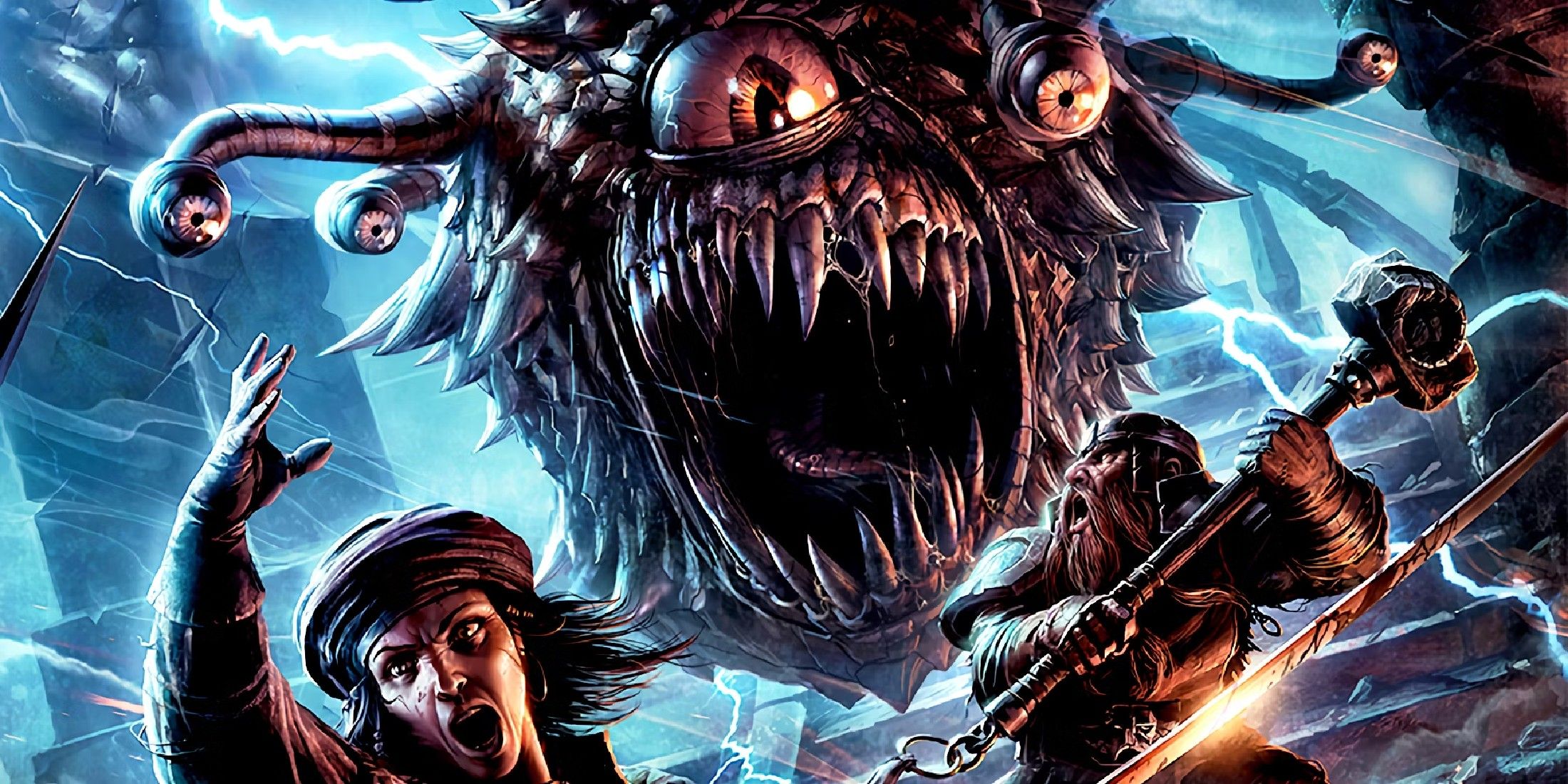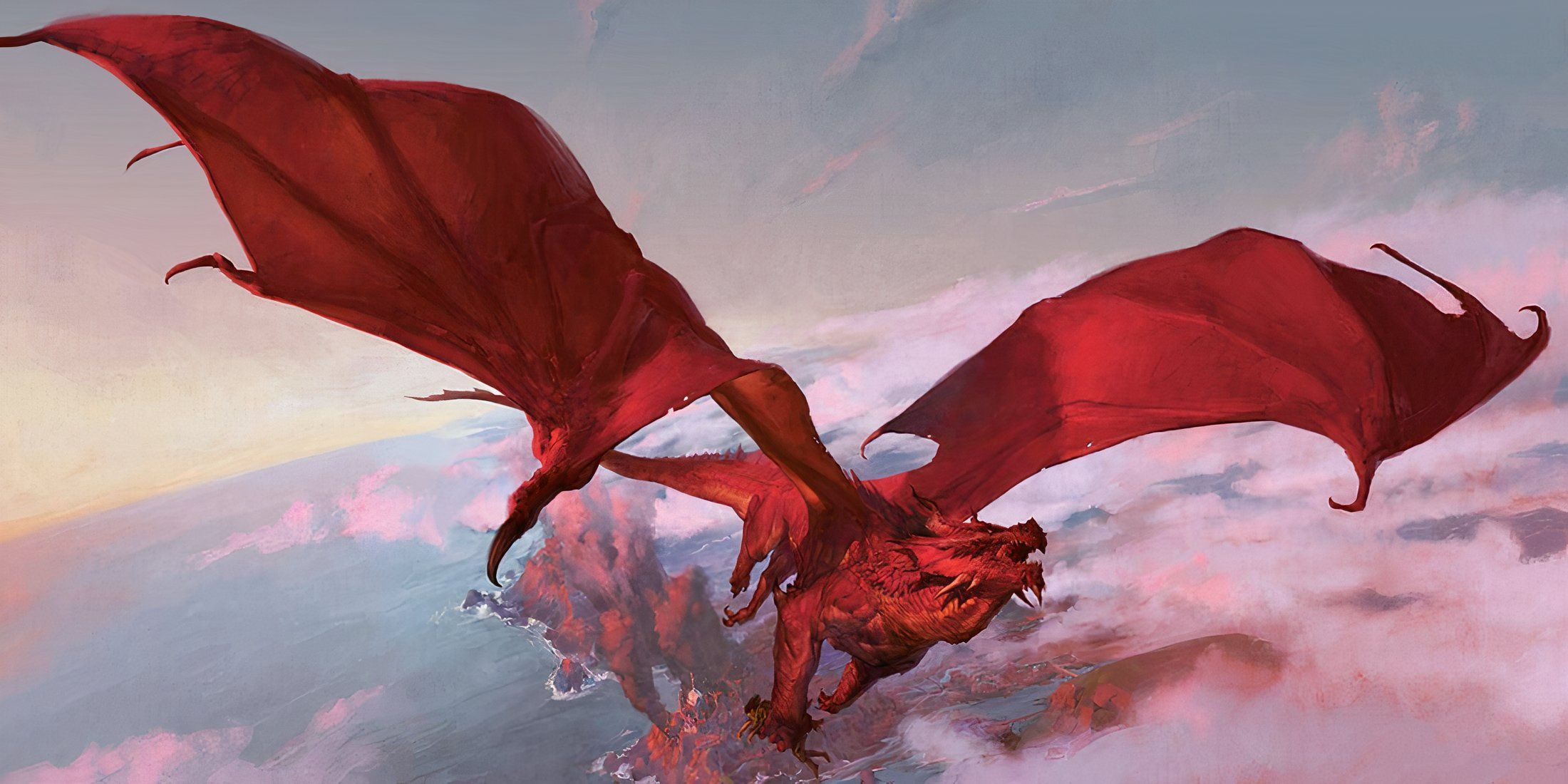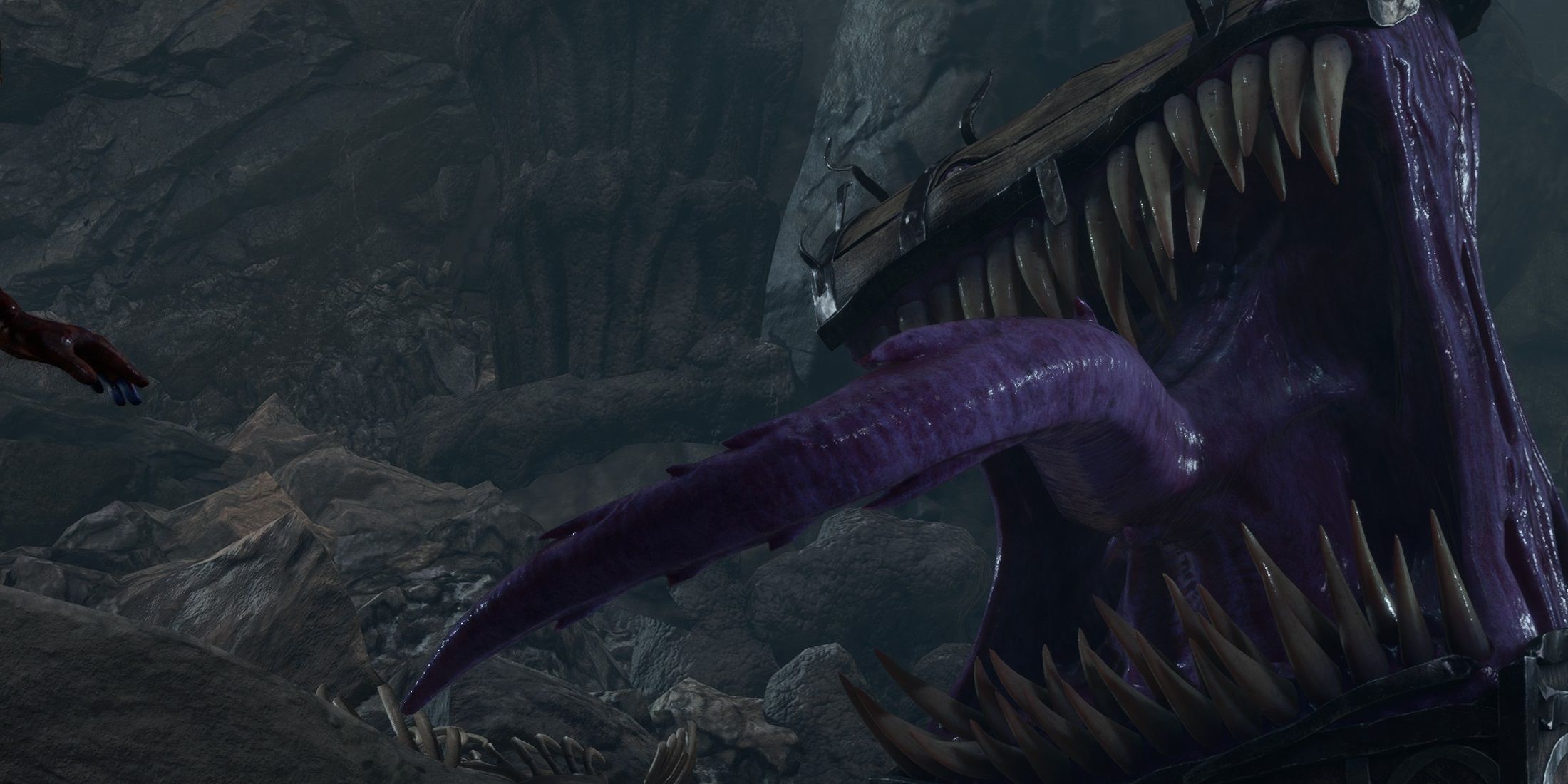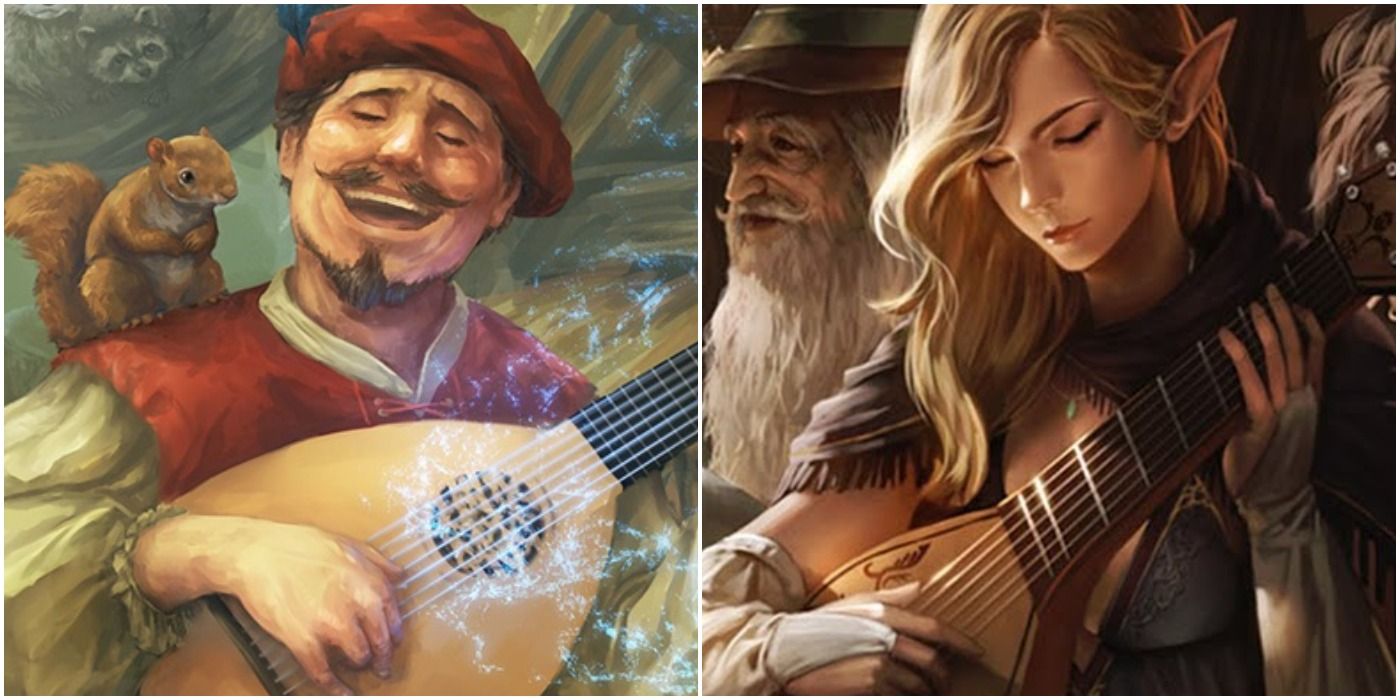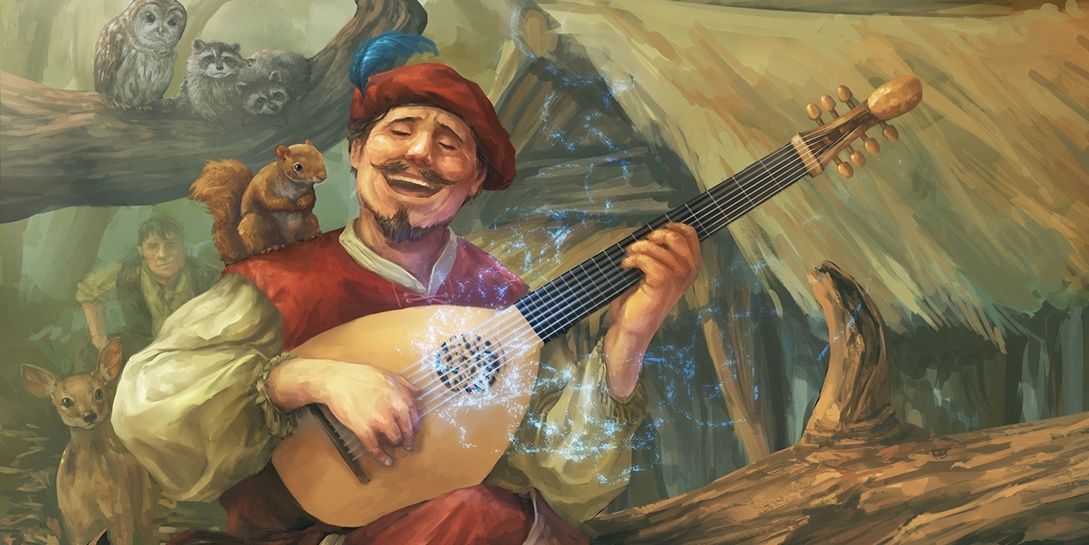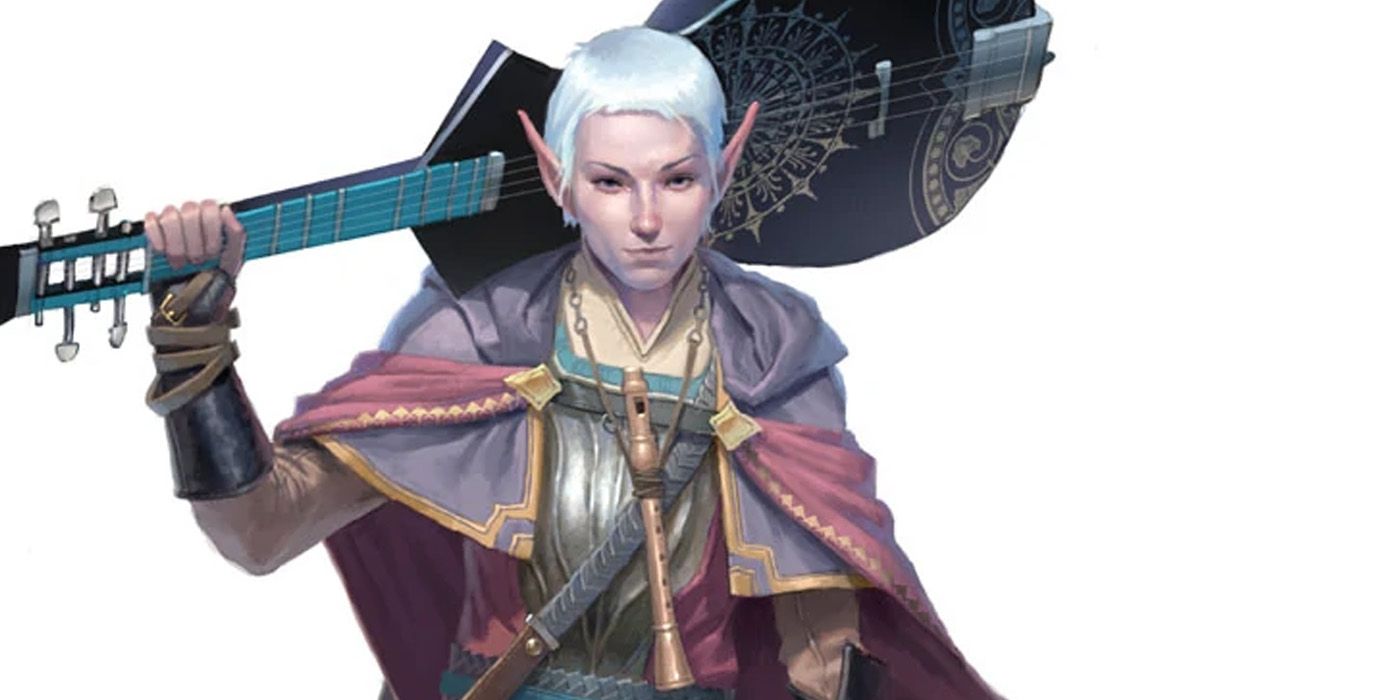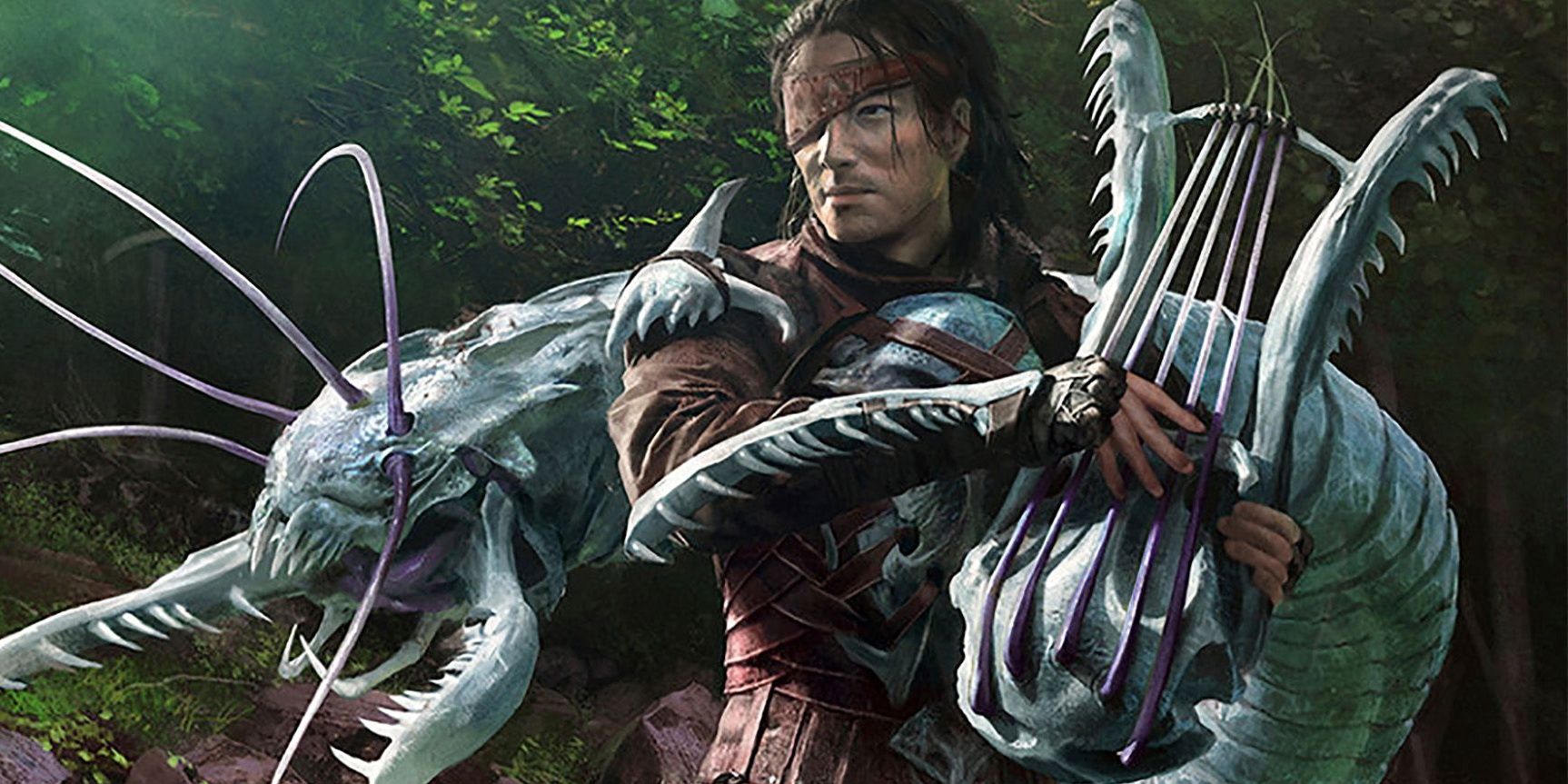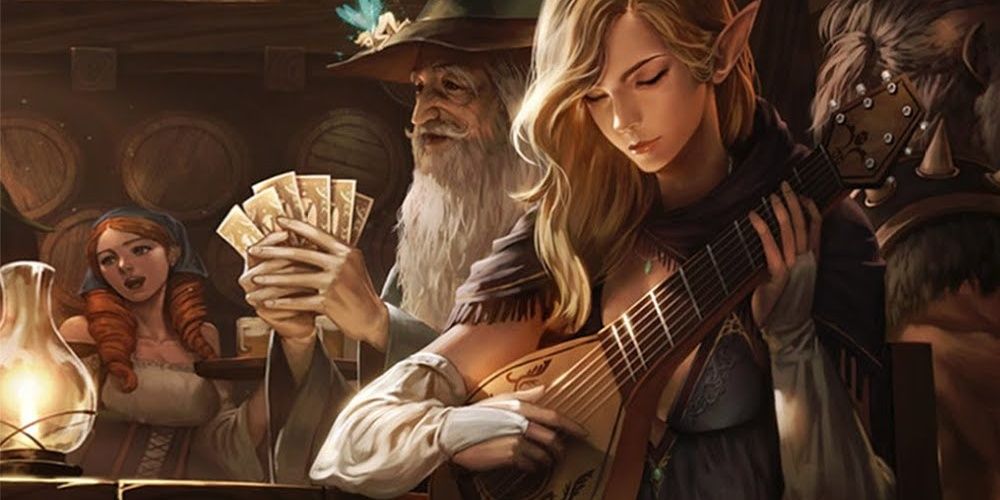One of the best parts of Dungeons and Dragons is the ability to create a unique character, but character customization can be daunting to a new player. There are twelve different classes to choose from, some of which are easy to confuse. But one class stands out as being particularly unique — the bard.
Historically, the word "bard" has commonly been used in reference to artists, especially musicians and poets, but Dungeons and Dragons puts its own spin on the concept. Bards can be entertainers but they go beyond simply performing for audiences. They are one of the most versatile classes in the game, able to be built to fill a variety of functions and be the jack of all trades of a group.
What Makes a Bard
Bard is the class best suited for a player interested in roleplay and character interaction. They tend to easily draw attention, making them good for social situations. Because of their naturally charismatic personality, bards often work as entertainers- musicians, storytellers, fools- though this is not a requirement. An experienced bard can seduce, charm, or intimidate NPCs as needed, create a diversion, or just entertain a crowd.
This does come with the downside that they are not as effective fighters, but what the bard lacks in brute force it makes up for with support. Even if they are usually going to be in the back, they can buff allies and weaken enemies.
One of their main abilities is "Bardic Inspiration," which increases the chances of other players' rolls succeeding. They can also be effective magic users and have access to a few unique spells, the best-known being "vicious mockery" which can put enemies at a disadvantage.
Examples of Bards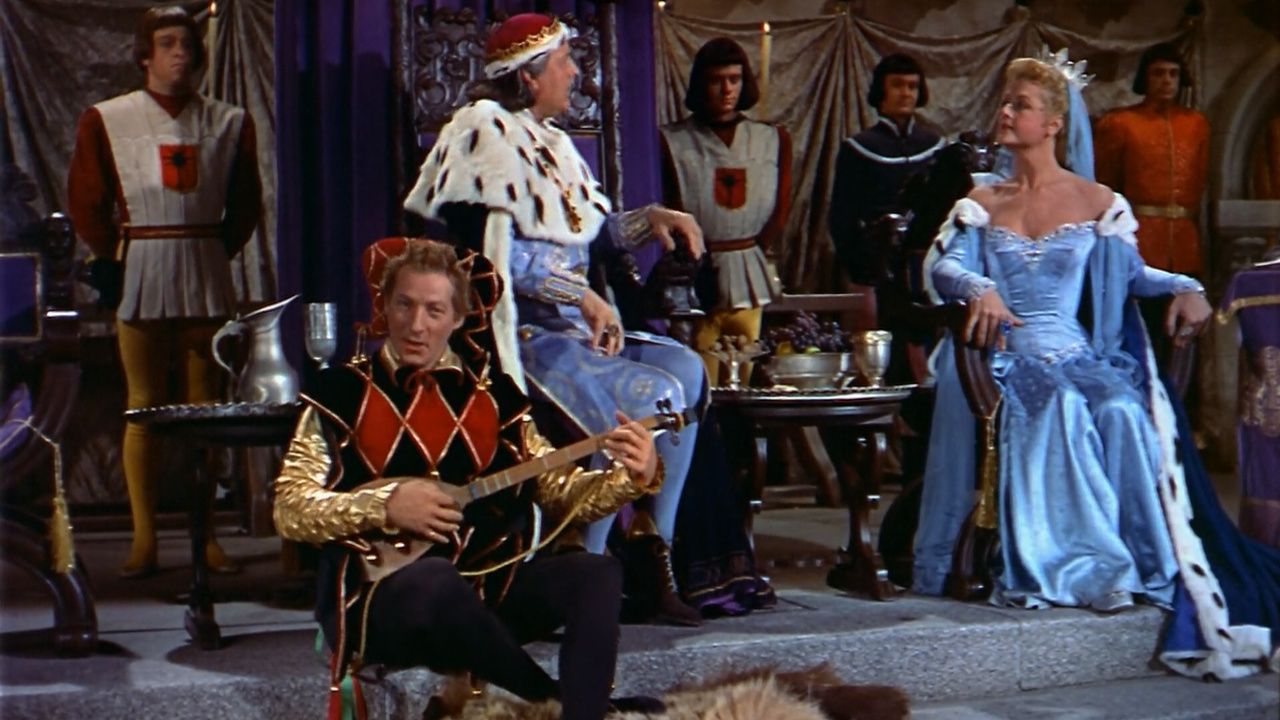
Fictional Characters
- Gabrielle- Xena: Warrior Princess: A passionate storyteller who writes and records her adventures with Xena
- Hubert Hawkins- The Court Jester: A multi-talented (if somewhat clumsy) performer who is even able to (reluctantly) take advantage of his skill by going undercover as the King's jester. The Jester whose identity he assumes, Giacomo, would also be an example- as a talented performer who is also secretly a master assassin.
- Lucio- Overwatch: a support team member who uses music as a source of healing
- Nigel West Dickens- Red Dead Redemption: Shady snake oil salesman who is able to use his performative skills to help John Marston track down his targets
- Yamato- Ghost of Tsushima: Travelling musician who is able to use his knowledge of the land to help Jin Sakai find valuable items
- Leliana- Dragon Age: Travelling performer who is also able to act as a spy and run a complex spy network
Historical Figures
While most historical figures would not be a perfect fit for the Dungeons and Dragons class, as they usually lack the more extraordinary abilities featured in the game, there is a pretty good range of historical figures who could be considered bards in the classical sense. Many of these can be a great source of inspiration for developing a bard's character.
- Enheduanna - The earliest recorded poet
- Geoffrey Chaucer - Author
- Herodotus - Author and historian
- Homer - Poet
- William Shakespeare - Playwright and poet
- Sappho - Poet
- Roland the Farter - Jester
- Socrates - Philosopher
- Plato - Philosopher and author
- Euripedes - Playwright
- Michelangelo - Painter
- Ludwig Van Beethoven - Composer and musician
These are only a few iconic examples. A creative player may know of other historical figures or characters that would also make great points of reference for developing a bard. A player could, for instance, experiment with designing their bard as a rock star inspired by Freddie Mercury or Elton John, a stand-up comedian in the vein of George Carlin, or a Penn Gillette-esque magician.
Bard Colleges
At the third level, a bard will need to select a "college" reflecting their skills. This is not always a literal college (though it can be, depending on the game and the setting) but rather a sub-class based on the character's interests. There are five colleges in total, but the two main ones featured in the Players' Handbook are the College of Lore and the College of Valor.
College of Lore
Lore is best suited for Bards interested in knowledge. A bard in the college of lore might act more like a researcher, asking questions and pursuing answers. They may still be performers and dramatists, but they are also realists with the goal of understanding the world around them as best as possible.
The real-life historian Herodotus would be a good example of a lore bard- his main interest in traveling was to better understand the world around him, so much so he popularized the concept of recording history.
The College of Lore also comes with a few special abilities, starting with "Cutting Words"- which allows a bard to react to an attacking enemy through wit instead of fighting them. At higher levels, a lore bard also gets access to "Additional Magical Secrets" which allows them to pick two extra spells from any class. At level 14 bards get access to the "peerless" skill which allows the bardic inspiration to be used on the player's skill checks.
College of Valor
A bard in the college of valor is more inclined to the dramatic life. They are not so much interested in understanding facts as stirring up emotions. While bards of the college of lore may try to tell stories of faraway places and events as accurately as possible, valor bards prefer action even if it means taking liberties.
They are known for singing Viking-style sagas of heroic adventures and brave deeds. The real-life playwright William Shakespeare would be closer to the College of Valor. Many of his plays drew on historical events or popular stories, but he generally favored dramatic effect over historical accuracy.
The College of Valor is better a good fit for bards expecting to see more action. Simply joining grants access to medium armor and martial weapons like battleaxes, flails, greatswords, and war hammers. They also get an upgrade to bardic inspiration called "combat inspiration" which can increase the damage output of other party members and at level six grant an extra turn in combat.
Creating a Bard
As a bard, players should expect to be performing and interacting with other characters a lot more than in other classes. Because bards are more social classes, charisma should be their highest ability score.
Many bards are musicians, and proficiencies with instruments are a standard part of bard creation, but it is not a requirement. A bard could pursue other lines of work like being an actor, dancer, author, painter, philosopher, or stand-up comedian. A neutral or evil-aligned bard could also make a very good con artist, especially as a snake oil salesman.
Whatever the bard's profession, a player will want to think about what they do and how they use their skills, and what motivates them. It will also help to think about possible goals. Perhaps the bard hopes to make it big someday, or they want to learn the truth behind some strange mystery. Maybe they just want to raise money for the orphanage where they grew up. Or perhaps they spreading propaganda in exchange for land and titles from a corrupt regime.
Knowing this information can also help with creating a solid backstory. For instance, what inspired them to become a bard? A simple explanation could be that they grew up in a family of performers and learned a bard's skills from a young age, or spent time as an apprentice to a traveling bard. Another possibility might be that they've been traveling for a long time and want to share their experiences with others. Or perhaps it started with the pursuit of answers to some mystery that led to a fascination with other mysteries and a need to solve them.

